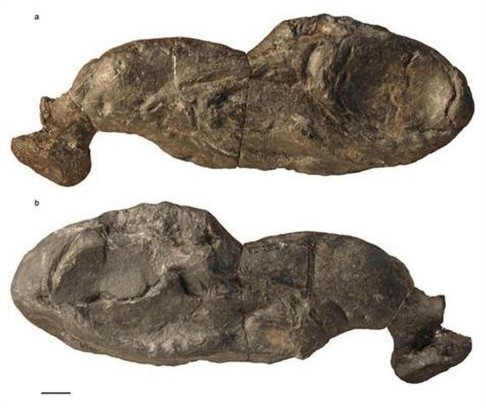
Fossil found in what's now Arkansas shows how sharks evolved


The impeccably preserved remains are complete with a series of cartilage arches that supported its gills and jaws.
Because shark skeletons are made of soft cartilage, not hard bone, finding anything more than scrappy fossilised remains of teeth and vertebrae is rare. Finding a fossil shark in an almost three-dimensional state of preservation, boasting important skeletal structures, is exceptional.
This primitive shark, named Ozarcus mapesae, may erase the notion that these beasts of the deep have remained little changed since they first appeared at least 420 million years ago.
"These things have been very successful, among the top predators in the earth's oceans, for over 400 million years," said palaeontologist Dr John Maisey of the American Museum of Natural History in New York, one of the researchers.
"The best analogy I can come up with is this: It's like comparing a Model T Ford with a modern automobile. They are both recognisably the same kind of thing. But they are completely different under the hood. We found the Model T of sharks," said Maisey, whose research was published in the journal Nature.
Their cartilage arches are quite different from those in modern sharks, suggesting that while their general outward appearance has stayed roughly the same, important changes have occurred over time that have helped make sharks the perfect eating machines of the sea.
"Modern sharks cannot be considered any more as living fossils that did not evolve since their origin. They are actually very derived compared to early cartilaginous fishes," said American Museum of Natural History palaeontologist Dr Alan Pradel, another of the researchers.
Maisey said Ozarcus mapesae was small by shark standards - about 60 to 90 cm long, with relatively big eyes. It swam in the murky waters of a shallow inland sea teeming with life including other fish and squid-like creatures in shells.
It is not the oldest shark fossil, but it is the oldest to reveal all of the anatomy of the skeleton supporting the gill arches, a vitally important element of a fish.